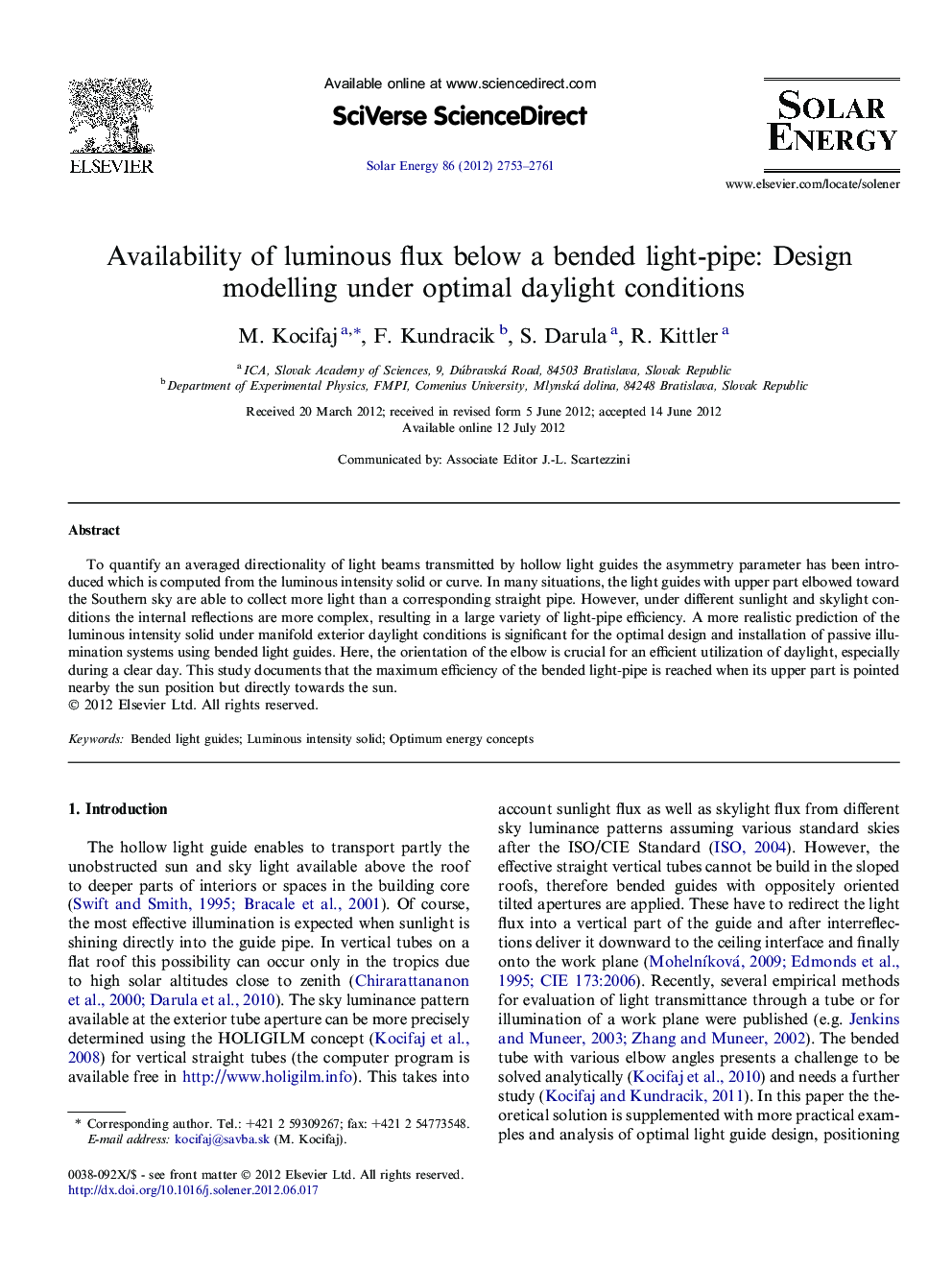| کد مقاله | کد نشریه | سال انتشار | مقاله انگلیسی | نسخه تمام متن |
|---|---|---|---|---|
| 1550926 | 998111 | 2012 | 9 صفحه PDF | دانلود رایگان |

To quantify an averaged directionality of light beams transmitted by hollow light guides the asymmetry parameter has been introduced which is computed from the luminous intensity solid or curve. In many situations, the light guides with upper part elbowed toward the Southern sky are able to collect more light than a corresponding straight pipe. However, under different sunlight and skylight conditions the internal reflections are more complex, resulting in a large variety of light-pipe efficiency. A more realistic prediction of the luminous intensity solid under manifold exterior daylight conditions is significant for the optimal design and installation of passive illumination systems using bended light guides. Here, the orientation of the elbow is crucial for an efficient utilization of daylight, especially during a clear day. This study documents that the maximum efficiency of the bended light-pipe is reached when its upper part is pointed nearby the sun position but directly towards the sun.
► Bended light guides can collect more light than corresponding straight pipes.
► The maximum efficiency is reached when pointed nearby but not exactly to the sun.
► The orientation of the elbow is crucial for an efficient utilization of daylight.
► Luminous intensity curves show strong directionality under sunny conditions.
Journal: Solar Energy - Volume 86, Issue 9, September 2012, Pages 2753–2761